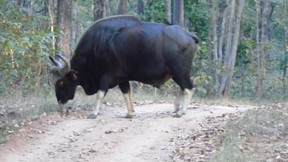 The swamp deer stag is one of the most enigmatic animals in the park equaling the majestic tiger. In terms of shape and size and majestic antlers is the most photogenic and as graceful and stately as a handsome male tiger.
The swamp deer stag is one of the most enigmatic animals in the park equaling the majestic tiger. In terms of shape and size and majestic antlers is the most photogenic and as graceful and stately as a handsome male tiger.
The park is full of enchanting animals not be outdone is the leopard the lithe and well-toned is the wild dog. The sloth bear though slothy is nevertheless captivating by its antics. Bison or Guar population of bovine are an impressive lot whence you encounter the large herds while the solitary male is indomitable and can be aggressive.
Kanha is a picture of excellence be it the common spotted deer, sambar, wild boar of the ubiquitous langur, or gray monkey. Barking deer barks like a dog while paradoxically the wild dog is a whistler. The tiger at the top of the food chain is the supreme or tertiary predator and an indicator species.
Small nocturnal mammals and reptiles though elusive can surprise you in broad daylight and enhance your safaris. No luck then take a night ride in the buffer.
The winged creatures bats included are abundant in the park and all over. There are two hundred and fifty plus species of avian with winter migrants included.
Kanha National Park is one of the finest birding destinations in Central India and a visit could be a revelation. Malabar pied hornbill, Shama, Indian pitta, paradise flycatcher, orange headed ground thrush, spangled drongo, red and painted spurfowl, painted francolin, Jerdon's Baza, King vulture, warblers, oriole, parakeets, bush chats, shrikes, raptors, owls,.....come and see yourself.
The Sal dominated forests are habitats of a large variety of floral elements big and small. They are not only in the background but in the forefront as well. See how they have shaped the panoramic landscape amidst tabletop mountains, deep valleys, mountain rivers, grasslands, and bamboo.
Nature's abundant bounty becomes evident upon one excursion in the tourism zone.


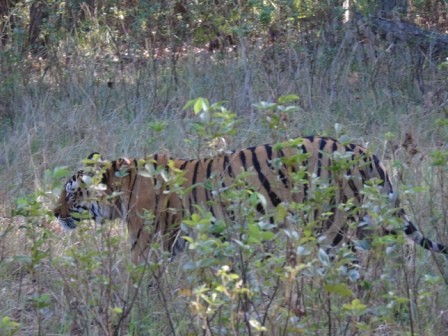
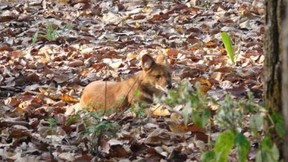 Among the first to be conserved the National Park is early days witnessed conservation of Halon and Banzar Valleys. The amazing biodiversity in terms of fauna and flora invited few visitors during the Raj. Then after that hunters and shooters followed. In order to preserve the invaluable offerings of nature in this present-day National Park this area was declared sacrosanct and two little sanctuaries came into existence.
Among the first to be conserved the National Park is early days witnessed conservation of Halon and Banzar Valleys. The amazing biodiversity in terms of fauna and flora invited few visitors during the Raj. Then after that hunters and shooters followed. In order to preserve the invaluable offerings of nature in this present-day National Park this area was declared sacrosanct and two little sanctuaries came into existence. 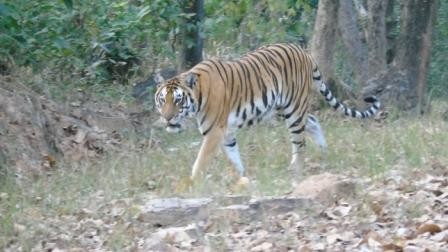
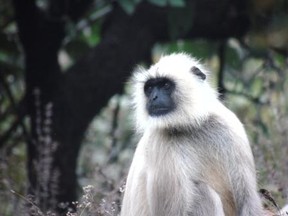 Two years back a pair of mouse deer were sighted and photographed. This was an encouraging sign of recovery of species long taken to be extinct. The birds, bees, snakes, and mammals all began to recover in lieu of the protection provided.
Two years back a pair of mouse deer were sighted and photographed. This was an encouraging sign of recovery of species long taken to be extinct. The birds, bees, snakes, and mammals all began to recover in lieu of the protection provided. 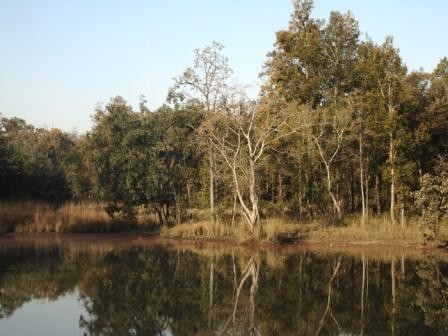



 The swamp deer stag is one of the most enigmatic animals in the park equaling the majestic tiger. In terms of shape and size and majestic antlers is the most photogenic and as graceful and stately as a handsome male tiger.
The swamp deer stag is one of the most enigmatic animals in the park equaling the majestic tiger. In terms of shape and size and majestic antlers is the most photogenic and as graceful and stately as a handsome male tiger. 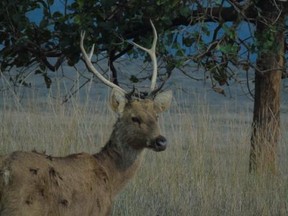 The twenty percent area reserved for tourism requires a permit for excursions. The permits for
The twenty percent area reserved for tourism requires a permit for excursions. The permits for 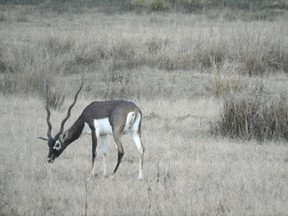 Flights from New Delhi and Mumbai are available to Jabalpur and Raipur Airports in Central India. Upon arrival, four hours plus drive is required to reach Kanha. Train services are also available to these destinations.
Flights from New Delhi and Mumbai are available to Jabalpur and Raipur Airports in Central India. Upon arrival, four hours plus drive is required to reach Kanha. Train services are also available to these destinations. 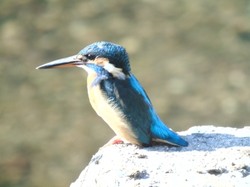

 Full Day Safari in Bandhavgarhon 08/29/2023
Full Day Safari in Bandhavgarhon 08/29/2023
 SEO Campaign: Website Overhaulon 02/13/2023
SEO Campaign: Website Overhaulon 02/13/2023
 Indian Food It Is Not All Curryon 02/08/2023
Indian Food It Is Not All Curryon 02/08/2023
 How Tiger Tourism is Organized in India?on 02/07/2023
How Tiger Tourism is Organized in India?on 02/07/2023
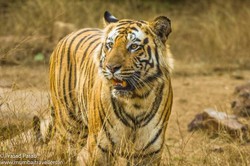
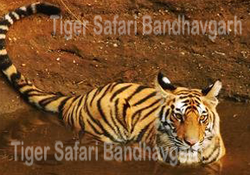
Comments
You can visit one zone in each safari hence you will require four safaris to visit each zone. The animal in picture is Guar or Indian Bison male.
pateluday, Thank you for the pictures and the practicalities.
What animals is in the image beneath your heading Kanha wilderness?
Would it require four separate reservations to visit all four of the tourist zones in one's lifetime?
Thanks!
You always provide excellent photographs of interesting animals and scenery.